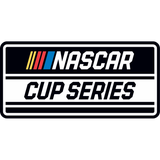
All-Star race shakeup goes well and NASCAR should try again
CONCORD, N.C. (AP) Something had to be done to NASCAR's annual All-Star race, which had stopped being special years ago. A bunch of drivers circled around Charlotte Motor Speedway in cars too difficult to pass for the lead, so whoever had the clean air raced to an easy $1 million prize.
It was terrible racing and everybody knew it.
So give NASCAR and Charlotte president Marcus Smith credit for trying a radically different rules package in a grasp toward adding something to the snooze-fest. They went with restrictor plates, the choking gadgets designed to limit horsepower, which are really only used at Daytona and Talladega. But pack racing on a boring 1.5-mile oval is at minimum something different, so there was no reason for NASCAR not to give it a try.
The results were mixed, and partly because Kevin Harvick won for the third consecutive race, and sixth time this season. Five of those wins are Cup Series points victories.
The final 10 laps, which are supposed to be a rough and tumble chase for the $1 million, were instead a Harvick rout and that can dilute the results.
The reality is that the risk taken in trying a new package, and Harvick withstanding, the results it produced were at least something different.
''Kudos to NASCAR for trying something, right?'' Joey Logano said. ''We as competitors come into this racetrack and say, `The heck with it, we'll go for anything.' At least NASCAR has the same attitude. It's the race that you have nothing to lose. They looked at it that way.''
NASCAR felt the same way and touted the 38 green-flag passes for the lead. Granted, Harvick led the final 11 laps and there was no dramatic sprint for the monetary prize, but there were zero green-flag passes for the lead last year. In fact, there were a combined 61 green-flag passes from 2013 through last season.
So from a statistical point of view, the package clearly was a step in the right direction.
''We're not high-fiving,'' said Steve O'Donnell, NASCAR's head of competition. ''I think you judge it by the fans. I think you look down the last 10 laps, everybody is standing up. People were enthused. You saw drivers out there competing. You saw three lead changes in one lap at the end of the third stage.''
NASCAR's in this really weird position in that it knows it needs some radical on-track improvement, but changes are expensive to the teams and disruptive to the purity of a championship season. It's why Smith, who has to sell tickets to next week's Coca-Cola 600, wouldn't hesitate to bring the rules package back Sunday.
Smith loved what he saw in the All-Star race, and he understands that the 600, the longest race by 100 miles on NASCAR's schedule, could use some spicing up. But, the drivers weren't exactly in love with the restrictor plates.
Yes, they were on board with trying something new for the All-Star race. But long-term? It takes planning and NASCAR can't fairly tell teams to bring the same package back to the 600 next week.
Or can they? Does there become a point of no return in which every week needs to be an on-track science experiment in NASCAR's bid to fix a broken product?
''It's a big ship to turn,'' acknowledged Harvick, the hottest driver in NASCAR this season.
NASCAR used this package at the Xfinity Series race at Indianapolis last year, and the series will use it there again this season and at Pocono and Michigan. Where it shows up next in the Cup Series is a mystery.
What wasn't a mystery, at least until Harvick flexed his Ford and took control of the race, was who was going to win. That wasn't the case last year.
''I think you knew on Lap 7 that Kyle Busch had won the All-Star Race, I think we all knew that last year,'' O'Donnell said of the fields' inability to catch the leader in last year's race.
The 600 can be just as challenging. The race that used to be an all-day affair in which the action started shortly before sundown and ended deep into the nightfall. Attrition was such a major element of the race, and just making it all 600 miles could be considered a victory to some. Austin Dillon won a fuel mileage race last year, but Martin Truex Jr. led 392 of 400 laps in 2016. Truex also led 233 laps last year until fuel mileage strategy helped Dillon win the race.
If that's what is in store for fans next week, it's going to be a disappointing close to what is supposed to be a magical celebration of racing. The 600 is the final event of an action-packed day of racing that begins in Monaco with Formula One, moves to the Indianapolis 500 and then closes with one of NASCAR's crown jewel events.
NASCAR needs to at least try not to be the worst race of the day.
So now the sanctioning body reviews the data; Smith pleads his case for more innovation for his race; The teams object to added costs; The drivers want the most competitive package possible, but opinions are mixed. While most seemed to enjoy the All-Star race format, it's not something they particularly want to do every week.
What happens next is in NASCAR's hands.
O'Donnell said ''never say never'' if the package will be in a Cup race again.
''For us, we've got to take the time, be smart about this, really look at it, see where we can go from here,'' O'Donnell said. ''But I think it's fair to say that this is something we absolutely want to look at.''



